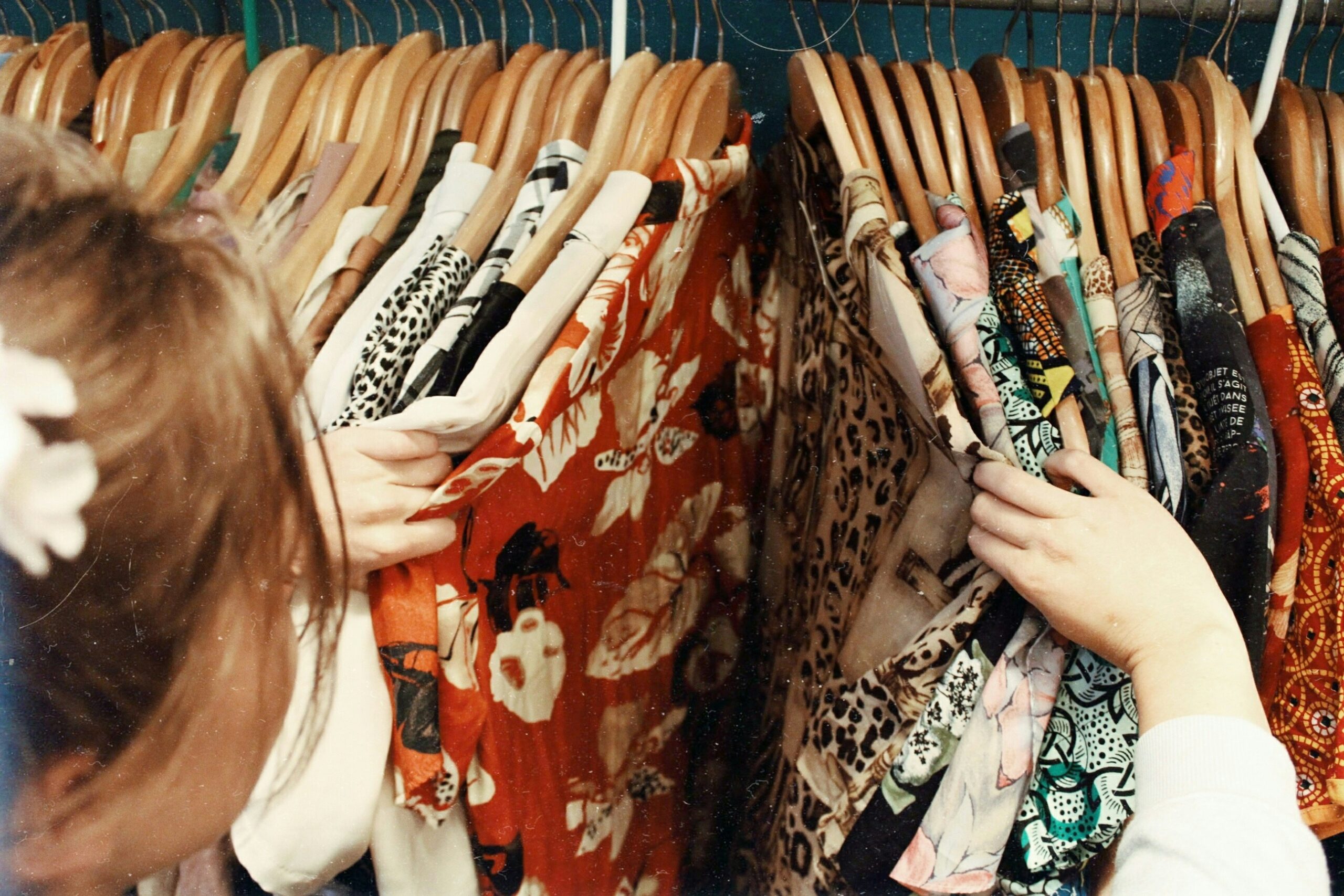
For its latest campaign, Saint Laurent shed its de rigueur dark, sleek backdrops, for a more unexpected setting: a backyard picnic.
Titled “An Ordinary Day,” rather than sumptuous leather couches draped in satin, models sit on folding chairs, licking their fingers, cutting fruitcakes and drinking tea. The accompanying video features a woman fixing a glass of orange juice, and another carrying a cheetah-print bag filled with fresh produce, while shots posted on Instagram focus on soft-boiled eggs, toast, butter and cakes — accented by broaches, purses and shoes.
It’s the latest evidence: Fashion has gone foodie.
Food has long been an important part of the marketing mix for brands, particularly in recent years, as brands like Ralph Lauren, Prada and Coach engage fans with cafés and reward top shoppers with sumptuous dinners. But increasingly, it’s being used in advertising imagery, too.
The author has shared an Instagram Post.You will need to accept and consent to the use of cookies and similar technologies by our third-party partners (including: YouTube, Instagram or Twitter), in order to view embedded content in this article and others you may visit in future.
In the midst of a luxury downturn, brands are betting that food can help drum up appetite for their products. Jacquemus and Loewe — who have used food including butter, toast, tomatoes and chocolate cake in marketing — were among the first, but lately have been joined by Prada, Burberry and Alaïa as well as sneaker labels Fila and Axel Arigato. Just last week, Tory Burch dropped a collection of blue and pink sandals with marshmallowy soles inspired by candy company BonBon. It’s not just food, but food culture: Retailer Neiman Marcus’ Spring 2025 campaign brought chef-fluencers Pierce Abernathy and Nara Smith, legendary restauranteur Michael Chow, heiress Ivy Getty and personality Kathy Hilton together around a white tablecloth dinner.
“Food is very sensory, it’s evocative,” said Karen Fielding, chief strategy officer at creative firm General Idea. “It delivers something that feels tangible and real in the context of everything feeling synthetic and overdone.”
The trend comes as foodie culture reaches its new zenith in culture at large. People follow restaurants like celebrities; they aspire to get the right reservation (and shot for Instagram) like they would a luxury handbag. Plus, in the midst of a cost of living crisis — fresh fruit, vegetables and a whole flaky loaf of sourdough communicate luxury and aspiration.
“Food has become a status symbol,” said Michael Scanlon, chief creative officer of creative agency Chandelier. “The shoe next to the jello mold signals the thing we’re all craving, which is luxury and experience and taste and delicacy, good times coming together.”
A Brandable Feast
Food is “the most universally understood language,” which makes for a strong marketing tool with diverse applications, said Miles Canares, founder of streetwear and fashion festival Family Style, which was acquired by Complex in 2024 and produced its first edition in New York this month. While food can help signal smell and texture for beauty brands like Rhode and Milk Makeup, for fashion, the effect is more subtle.
For Axel Arigato creative director Jens Werner using food was a fresh way to connect with the brand’s broad range of shoppers. After seeing more conversation about “food experiences than ever,” he centred the brand’s holiday season shoot around a dinner table filled with fruit, vegetables and bread.
“Food is the connector,” said Werner. “You relate to the food, and then you see a sneaker and all of the sudden it looks interesting and more digestible.”
The author has shared an Instagram Post.You will need to accept and consent to the use of cookies and similar technologies by our third-party partners (including: YouTube, Instagram or Twitter), in order to view embedded content in this article and others you may visit in future.
While food channels familiarity, it’s often used in fashion to fuel aspiration and signal abundance — which has been the case throughout art history, particularly during the Renaissance and Dutch golden age, pointed out YouTube creator Katie Robinson. And as rising grocery prices dominate headlines, putting a bunch of food — a juicy eggplant, tomato, leafy greens or jammy egg — in a photo today is inherently loaded.
But beyond just signalling “luxury,” food in fashion gets at the core of what consumers consider to be an excess today. “The objects themselves don’t mean much in themselves today. We all know they are not that scarce,” said Fielding. “Status has shifted from the object to the story around the object.”
At the same time, people want to signal taste, rather than just wealth, said Scanlon. Fashion’s newfound obsession with literature — see Miu Miu’s book club and Alaïa’s cafe and bookstore, for example — is another example of this effect.
“Now luxury is about cultivating taste and cultivating experiences,” he said. “Accumulating taste and knowledge is your cultural currency versus wealth and more traditional notions of hierarchy.”
Have Shoppers Had Their Fill?
Initially, the fact that food was unexpected in fashion advertising was part of the appeal, a way to stop a scroll and beat the algorithm. Now that the move is becoming more popular, however, standing out is harder.
The author has shared an Instagram Post.You will need to accept and consent to the use of cookies and similar technologies by our third-party partners (including: YouTube, Instagram or Twitter), in order to view embedded content in this article and others you may visit in future.
Brands should consider their aim in centering food in their marketing. It may be to convey a playful attitude — Jacquemus cheekily stuck a banana in a hole at a golf course in a shoot with “The White Lotus” star Jon Gries, after a banana-shaped car drove through Los Angeles to promote its new store. Menswear label Aimé Leon Dore’s espresso-laden Instagram imagery, cafe and collaboration with machine maker La Marzocco, meanwhile, communicates European refinement and masculinity, said Fielding. Saint Laurent’s lean into mundane suburban routine creates a sense of irony. There’s also something nostalgic about simple food, and put plainly, its colours and textures can be used as something akin to an art installation, said Werner.
“Food helps a brand build out the ideas they want to land,” said Fielding.
Beyond visuals, brands are also investing in creating more food-and-beverage experiences that go beyond basic comforts, like handing out water bottles to shoppers. At events, brands one-up each other with exotic spreads and imaginative custom confections popularised by chefs including Laila Gohar and Imogen Kwok, who have produced Instagrammable spreads for brands including Hermès, Prada, Tiffany, Loewe and Mytheresa. For its showroom in Paris last season, New York-based label Khaite made custom Miller High Life bottles reading “the cashmere of beers” rather than “the champagne of beers,” which the brand will look to do more of this summer, said Scanlon, who worked on the project. Axel Arigato sent a branded lemonade truck through London in April, and plans to put cinnamon buns — as a nod to its Swedish heritage — in its stores on Fridays soon.
At the same time, food companies are acting more like fashion brands. Hard-to-reserve restaurants and grocery stores like Erewhon use scarcity, drops and collaborations to ratchet up demand and perception. Canares first got the idea for his festival when he saw the same people in line at Supreme and LA hotspots like Howlin’ Ray’s, known for its chicken sandwich, and realised the two operated on similar principles.
Marketing follows the market: Fashion advertising in the 1990s, before the mortgage crisis, often featured beautiful homes — which seemed within reach for the public at large, said Scanlon. Nightlife was also in full swing, and party-adjacent scenes were a common trope for brands like Tom Ford and Gucci. How long cakes, tomatoes and butter will be stuck next to shoes and bags depends on human behaviour and wider socioeconomic forces.
“It’s always a reflection of where culture is,” said Scanlon. “This generation is not going out, it’s not obsessed with owning a home. What are the things we aspire to? Getting a table at that place that has just opened.”








